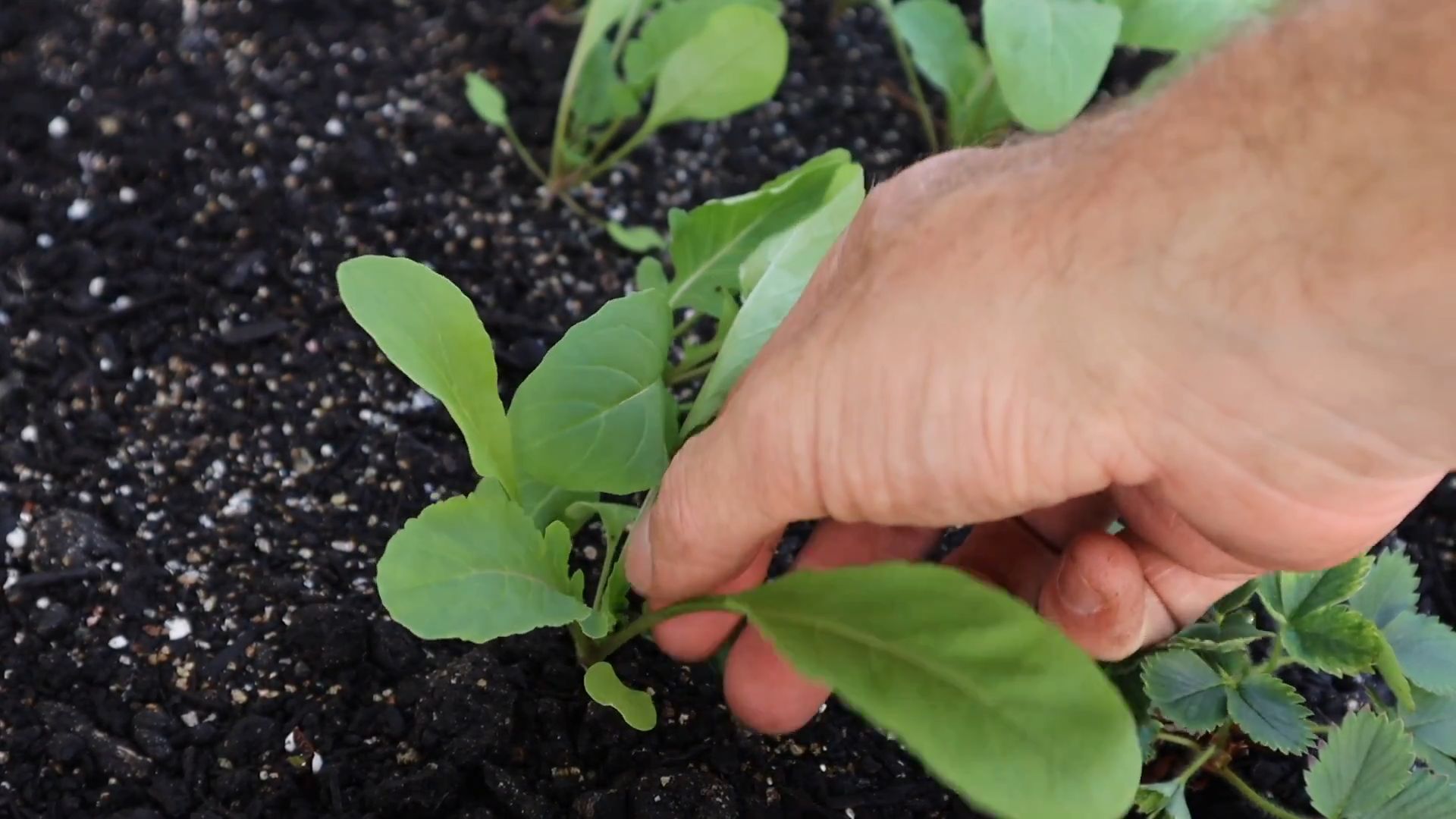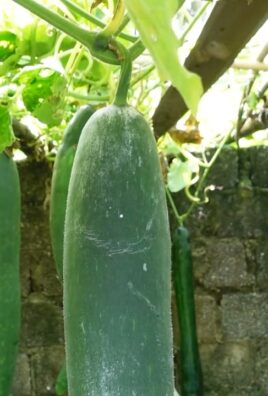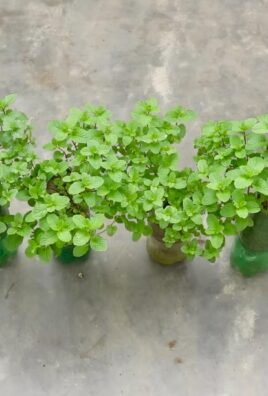Grow Arugula Indoors Easily and enjoy fresh, peppery greens right at your fingertips, no matter the season! Have you ever craved a vibrant salad in the dead of winter, only to be disappointed by the limp, flavorless offerings at the grocery store? I have! That’s why I’m so excited to share these simple, effective DIY tricks that will transform your windowsill into a thriving arugula patch.
Arugula, also known as rocket, has a rich history dating back to ancient Rome, where it was prized for its distinctive flavor and medicinal properties. Today, this leafy green remains a culinary staple, adding a zesty kick to salads, pizzas, and countless other dishes. But let’s face it, buying arugula from the store can be expensive and often lacks the freshness we crave.
That’s where these DIY home gardening hacks come in! Learning to grow arugula indoors easily is not only cost-effective but also incredibly rewarding. Imagine the satisfaction of harvesting your own organic, flavorful arugula whenever you need it. Plus, it’s a fantastic way to add a touch of green to your living space and connect with nature, even if you don’t have a backyard. So, let’s dive in and discover the secrets to cultivating a flourishing indoor arugula garden!

Grow Arugula Indoors: A Simple Guide for Fresh Greens All Year Round
Hey there, fellow plant enthusiasts! Craving that peppery, zesty arugula flavor but don’t have a garden? No problem! I’m going to walk you through how to grow arugula indoors, easily and successfully. It’s surprisingly simple, and you’ll be enjoying fresh salads in no time.
What You’ll Need
Before we dive in, let’s gather our supplies. This is a pretty low-fuss project, so you probably have a lot of this stuff already.
* **Arugula Seeds:** Obviously! You can find these at most garden centers or online. Look for varieties specifically suited for container growing, if possible, but honestly, most arugula seeds will work just fine.
* **Containers:** You’ll need something to grow your arugula in. I recommend containers that are at least 6 inches deep. You can use plastic pots, terracotta pots, or even repurposed containers like yogurt tubs (just make sure they have drainage holes!).
* **Potting Mix:** Don’t use garden soil! It’s too heavy and doesn’t drain well. Opt for a good quality potting mix that’s designed for containers.
* **Grow Lights (Optional but Recommended):** While arugula can grow indoors with natural light, it tends to get leggy (tall and spindly) without enough light. Grow lights will ensure you have compact, healthy plants. A simple fluorescent shop light works great.
* **Watering Can or Spray Bottle:** For gentle watering.
* **Small Shovel or Trowel:** For planting the seeds.
* **Seed Starting Tray (Optional):** If you want to start your seeds indoors before transplanting them.
* **Fertilizer (Optional):** A balanced liquid fertilizer can give your arugula a boost, but it’s not strictly necessary.
Getting Started: Planting Your Arugula Seeds
This is where the magic happens! Let’s get those seeds in the soil.
1. **Prepare Your Containers:** Fill your containers with potting mix, leaving about an inch of space at the top. Gently pat down the soil to remove any large air pockets.
2. **Sow the Seeds:** Arugula seeds are tiny, so you don’t need to plant them very deep. Sprinkle the seeds evenly over the surface of the soil. Aim for about 1/4 inch spacing between seeds. You can also sow them in rows if you prefer.
3. **Cover the Seeds:** Lightly cover the seeds with a thin layer of potting mix.
4. **Water Gently:** Use a watering can or spray bottle to gently moisten the soil. Be careful not to wash the seeds away. The soil should be moist but not soggy.
5. **Provide Light:** If you’re using grow lights, position them a few inches above the soil surface. If you’re relying on natural light, place your containers in a sunny windowsill that receives at least 6 hours of direct sunlight per day.
6. **Maintain Moisture:** Keep the soil consistently moist but not waterlogged. Check the soil moisture daily and water as needed.
Nurturing Your Arugula: Care and Maintenance
Now that your seeds are planted, it’s time to provide the right conditions for them to thrive.
1. **Temperature:** Arugula prefers cooler temperatures, ideally between 60-70°F (15-21°C). Avoid placing your containers near heat sources like radiators or vents.
2. **Light:** If you’re using grow lights, keep them on for about 12-14 hours per day. If you’re using natural light, rotate your containers regularly to ensure even growth.
3. **Watering:** As I mentioned before, keep the soil consistently moist. Overwatering can lead to root rot, so make sure your containers have good drainage.
4. **Thinning (Optional):** Once your seedlings have emerged and have a few true leaves (the second set of leaves that appear after the initial seed leaves), you can thin them out if they’re too crowded. This will give the remaining plants more room to grow. Simply snip off the extra seedlings at the soil line.
5. **Fertilizing (Optional):** If you want to give your arugula a boost, you can fertilize it every few weeks with a balanced liquid fertilizer. Follow the instructions on the fertilizer label.
6. **Pest Control:** Arugula is generally pest-resistant, but you may occasionally encounter aphids or other small pests. If you notice any pests, you can try spraying them with insecticidal soap or neem oil.
Harvesting Your Arugula: Enjoying Your Fresh Greens
The best part! Harvesting your own homegrown arugula is incredibly rewarding.
1. **When to Harvest:** You can start harvesting arugula leaves when they are about 2-3 inches long. The younger leaves will have a milder flavor, while the older leaves will be more peppery.
2. **How to Harvest:** Use scissors or your fingers to snip off the leaves near the base of the plant. You can harvest individual leaves or cut the entire plant down to about an inch above the soil line. If you cut the entire plant, it will usually regrow, giving you multiple harvests.
3. **Succession Planting:** To ensure a continuous supply of arugula, sow new seeds every few weeks. This is called succession planting.
4. **Storage:** Freshly harvested arugula is best used immediately. However, you can store it in the refrigerator for a few days. Wrap the leaves in a damp paper towel and place them in a plastic bag.
Troubleshooting: Common Arugula Growing Problems
Even with the best care, you might encounter a few problems along the way. Here are some common issues and how to address them.
* **Leggy Plants:** This is usually caused by insufficient light. Make sure your arugula is getting enough light, either from grow lights or a sunny windowsill.
* **Yellowing Leaves:** This can be caused by overwatering, underwatering, or nutrient deficiencies. Check the soil moisture and adjust your watering accordingly. If you suspect a nutrient deficiency, try fertilizing with a balanced liquid fertilizer.
* **Slow Growth:** This can be caused by cool temperatures, insufficient light, or poor soil. Make sure your arugula is getting enough light and warmth. You can also try adding some compost to the soil to improve its fertility.
* **Bitter Taste:** Arugula can become bitter if it’s grown in hot weather or if it’s allowed to bolt (go to seed). To prevent bolting, keep your arugula well-watered and harvest it regularly.
Extra Tips for Arugula Success
Here are a few extra tips to help you grow the best arugula possible:
* Choose the right variety: Some arugula varieties are more heat-tolerant than others. If you live in a warm climate, choose a heat-tolerant variety.
* Use a well-draining potting mix: Arugula doesn’t like to sit in soggy soil. Make sure your potting mix is well-draining.
* Water deeply but infrequently: Water your arugula deeply when the soil feels dry to the touch. Avoid watering shallowly, as this can encourage shallow root growth.
* Harvest regularly: Harvesting arugula regularly will encourage new growth and prevent the plants from bolting.
* Consider companion planting: Arugula grows well with other leafy greens like lettuce and spinach. You can also plant it with herbs like basil and cilantro.
Growing arugula indoors is a simple and rewarding way to enjoy fresh greens all year round. With a little bit of care and attention, you’ll be harvesting your own delicious arugula in no time! Happy gardening!

Conclusion
So, there you have it! Growing arugula indoors easily is not only achievable, but it’s also incredibly rewarding. Imagine fresh, peppery arugula leaves just steps away from your kitchen, ready to elevate your salads, pizzas, and sandwiches any time of year. Forget those wilted, overpriced greens from the grocery store. With a little effort and this simple DIY trick, you can enjoy a constant supply of vibrant, flavorful arugula, bursting with freshness and nutrients.
This isn’t just about saving money; it’s about taking control of your food source and connecting with the natural world, even within the confines of your home. The satisfaction of harvesting your own homegrown arugula is truly unmatched. Plus, it’s a fantastic way to introduce children to the joys of gardening and healthy eating.
But the fun doesn’t stop there! Feel free to experiment with different varieties of arugula. ‘Astro’ arugula offers a milder flavor, while ‘Wasabi’ arugula packs a serious punch. You can also try growing other leafy greens alongside your arugula, such as spinach, lettuce, or even herbs like basil and parsley, creating a mini indoor salad garden. Consider using different types of containers, from repurposed yogurt containers to stylish ceramic pots, to add a touch of personality to your indoor garden.
Don’t be afraid to adjust the lighting and watering schedule based on your specific environment. If you live in a particularly dark area, you might need to supplement with a grow light. And if your arugula seems to be growing slowly, try adding a diluted liquid fertilizer to the watering can every couple of weeks.
We’ve provided you with the tools and knowledge to embark on your indoor arugula growing adventure. Now, it’s your turn to get your hands dirty (or not, if you’re using a hydroponic system!). We are confident that you’ll find this DIY trick to be a game-changer in your kitchen.
We wholeheartedly encourage you to try growing arugula indoors easily using our method. Once you’ve harvested your first batch of homegrown arugula, we’d love to hear about your experience! Share your photos, tips, and any variations you’ve tried in the comments below. Let’s build a community of indoor gardeners and inspire others to embrace the joys of fresh, homegrown food. Happy growing!
Frequently Asked Questions (FAQ)
What kind of soil should I use for growing arugula indoors?
Arugula thrives in well-draining soil that is rich in organic matter. A good starting point is a potting mix specifically formulated for vegetables. You can also create your own mix by combining equal parts of potting soil, compost, and perlite or vermiculite. The compost provides essential nutrients, while the perlite or vermiculite improves drainage and aeration, preventing the soil from becoming waterlogged. Avoid using garden soil, as it can be too heavy and may contain pests or diseases.
How much light does arugula need when grown indoors?
Arugula needs at least 6 hours of direct sunlight per day to grow well. If you don’t have a sunny windowsill, you can supplement with a grow light. Fluorescent or LED grow lights are excellent options. Position the light a few inches above the arugula seedlings and keep it on for 12-14 hours per day. Rotate the plants regularly to ensure even light exposure on all sides. Insufficient light can result in leggy, weak growth and a less flavorful harvest.
How often should I water my indoor arugula plants?
Water arugula regularly, keeping the soil consistently moist but not soggy. Check the soil moisture by sticking your finger about an inch deep. If it feels dry, it’s time to water. Water deeply, allowing excess water to drain out of the bottom of the container. Avoid overwatering, as this can lead to root rot. The frequency of watering will depend on factors such as the size of the container, the type of soil, and the temperature and humidity of your home.
How long does it take for arugula to germinate and be ready for harvest?
Arugula seeds typically germinate within 5-7 days. You can start harvesting the leaves when they are about 2-3 inches long, usually around 3-4 weeks after planting. Harvest the outer leaves first, allowing the inner leaves to continue growing. This cut-and-come-again method will provide you with a continuous supply of fresh arugula for several weeks.
Can I grow arugula indoors year-round?
Yes, you can absolutely grow arugula indoors year-round! Because you’re controlling the environment, you’re not subject to seasonal changes. Just ensure you provide adequate light, water, and nutrients. Indoor growing is a fantastic way to enjoy fresh greens even during the colder months when outdoor gardening is not possible.
What are some common problems I might encounter when growing arugula indoors, and how can I fix them?
Some common problems include:
* **Leggy growth:** This is usually caused by insufficient light. Provide more light, either by moving the plants to a sunnier location or using a grow light.
* **Yellowing leaves:** This could be due to overwatering, underwatering, or nutrient deficiency. Adjust your watering schedule and consider adding a diluted liquid fertilizer.
* **Pests:** Aphids and spider mites can sometimes infest indoor plants. Inspect your plants regularly and treat any infestations with insecticidal soap or neem oil.
* **Slow growth:** This could be due to a variety of factors, including insufficient light, poor soil, or lack of nutrients. Make sure your plants are getting enough light, water, and fertilizer.
Can I use a hydroponic system to grow arugula indoors?
Yes, hydroponics is an excellent option for growing arugula indoors. Hydroponic systems provide the plants with all the necessary nutrients and water directly to the roots, resulting in faster growth and higher yields. There are many different types of hydroponic systems available, from simple DIY setups to more sophisticated commercial systems. Research different options and choose one that suits your budget and space.
How do I harvest arugula leaves without damaging the plant?
The best way to harvest arugula is to use scissors or a sharp knife to cut the outer leaves about an inch above the soil line. Avoid pulling the leaves, as this can damage the roots. Harvesting the outer leaves encourages the plant to produce more leaves from the center, extending the harvest period.
Is it necessary to fertilize arugula when growing it indoors?
While arugula can grow without fertilizer, providing it with nutrients will result in healthier plants and a more abundant harvest. Use a diluted liquid fertilizer specifically formulated for leafy greens. Apply the fertilizer every 2-3 weeks, following the instructions on the product label. Avoid over-fertilizing, as this can burn the roots.
What are the best varieties of arugula to grow indoors?
While most arugula varieties will grow well indoors, some are particularly well-suited for container gardening. ‘Astro’ arugula is a popular choice due to its mild flavor and compact growth habit. ‘Sylvetta’ arugula is another good option, known for its peppery flavor and resistance to bolting (going to seed). Experiment with different varieties to find your favorite!




Leave a Comment